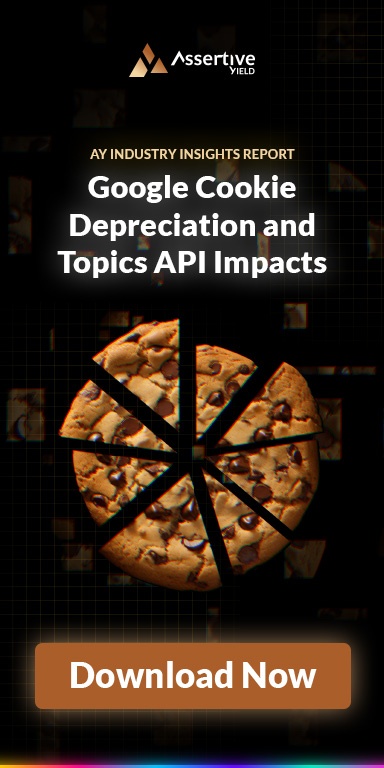What are the top 5 Challenges Programmatic SSPs are Facing in 2024?
As the industry evolves, many SSPs are on life support due to new challenges arising in 2024, from DSP bid request limits and ad spending slowdown to the looming disintermediation of SSPs in the supply chain - it's a tug of war.

In today's digital world, Supply-Side Platforms (SSPs) are crucial in helping publishers monetize their online content. However, as the industry evolves, many SSPs are on life support due to new challenges arising in 2024, from DSP bid request limits, and ad spending slowdown to the looming disintermediation of SSPs in the supply chain - it's a tug of war.
With more advertisers switching their advertisements to the sell-side and putting more money on the line, it is only logical for larger SSP companies with a larger share of the programmatic advertising industry to strive for monopoly. Therefore, not only do SSPs face competition from other programmatic players, but they must also combat disintermediation within their kind.
In this article, we will be exploring these challenges to be overcome in detail to drive efficiency and monetization at scale.
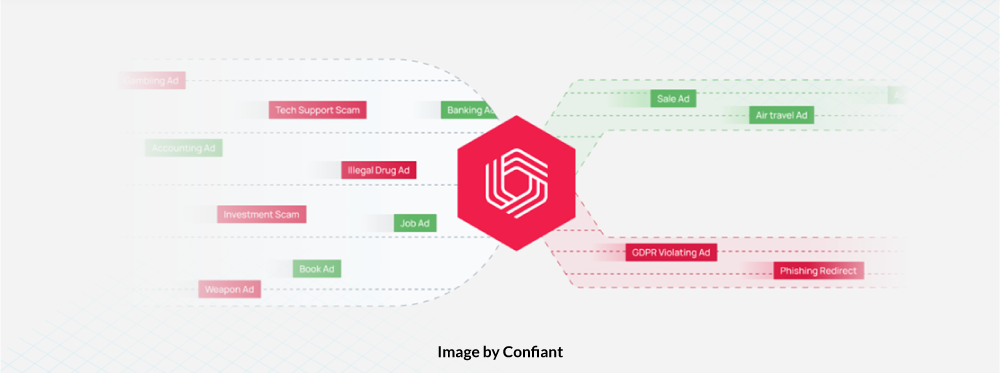
Ad Fraud
Ad fraud is a significant problem for the programmatic advertising industry and continues to challenge SSPs. The inability to audit ad inventory and trace it to specific users, as well as untested ways to bundle inventory, will, unfortunately, increase the likelihood of fraudsters using various tactics to manipulate the ad-buying process, including bots, domain spoofing, click injection, and cloaking, leading to the loss of significant revenue for advertisers and publishers.
Today drive-by downloads have evolved; it's no longer about one click. It's about two clicks. They first get the person to click on the fake ad. It's an actual ad, a button paid for, but it is fake.
“For example, if you go and try and download Slack from Google Search, in October, 8% of all the ads targeted the US for Slack.
When someone Googled Slack and downloaded 8% of all the ads, the first link on the page was malware. So, there's a bad actor pretending to be Slack to Google, paying Slack to put ads as if they were Slack. Cloaking it because, again, Google's trying to catch these things, too. Cloaking it so that you can't see what it is unless you match the targeting parameters and then only decloaking and showing itself when the right type of user was being served up. And then, in that case, it looks like Slack; it works like Slack, except it's got a back door in it where you've just installed a maliciously hacked version of it,” Jerome Dangu, Co-founder of Confiant.
Because of this, SSPs and ad exchanges need to invest in ad fraud detection and prevention technologies such as Confiant, Escalated, Clickcease, and more to reduce the risk of fraudulent activity.

Bidstream Inefficiency
While there are various causes for the mounting inefficiencies in the ad buying process, one of the underlying causes is the prevalence of inefficient bidstreams, with more than 90% of bid requests currently ending in wasted traffic that receives no bids from DSPs and their advertisers.
The programmatic arm race has accelerated in recent years, pushed by an oversaturated market and growing tech infrastructure costs, resulting in fewer DSPs and a more tense relationship between SSPs and the remaining DSPs.
However, DSPs have implemented queries per second (QPS) restrictions to simplify the bid request process and lower the significant costs associated with billions of inquiries in response to the bid request inflation.
However, these methods have also raised some concerns, like who should be in charge of vetting bid requests: the supply side or the demand side?
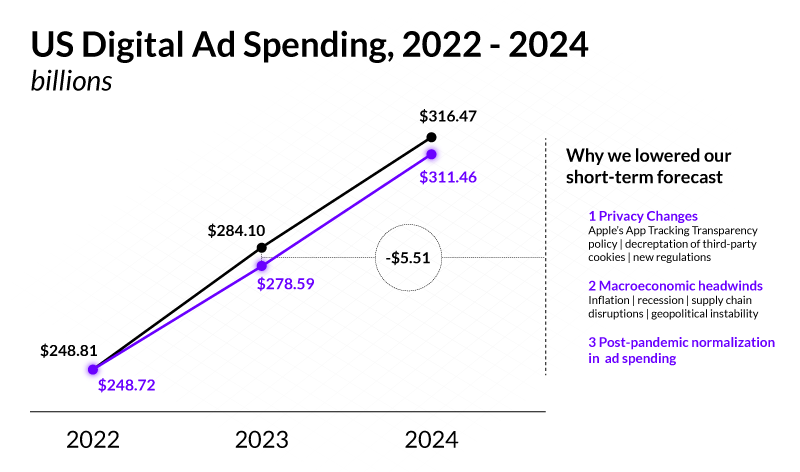
Demand-Side Platforms Bid Request Limitations
DSP bid request limitations have been a significant challenge for SSPs recently. DSPs rely on bid requests to make real-time decisions about which impressions to buy on behalf of advertisers. However, limitations on the number of bid requests that DSPs can process can harm the performance of SSPs
One of the main reasons for DSP bid request limitations is the increasing volume of ad requests being generated. According to a report from eMarketer, digital ad spending in the US is expected to exceed $200 billion by 2023, and this growth is leading to a surge in ad requests. As a result, DSPs are struggling to keep up with the sheer volume of bid requests, which can reduce the number of impressions being sold by SSPs.
Another factor contributing to the challenge is the rise of header bidding. Header bidding allows SSPs to offer inventory to multiple demand sources simultaneously, significantly increasing bid requests. However, this influx of requests can cause DSPs to hit their processing limits, leading to missed opportunities for SSPs.
Furthermore, the growth of programmatic advertising has also contributed to these challenges. Programmatic advertising relies on real-time bidding (RTB) technology, which generates a high volume of bid requests. With many DSPs only able to process a limited number of requests per second, SSPs may find selling all of their inventory challenging.
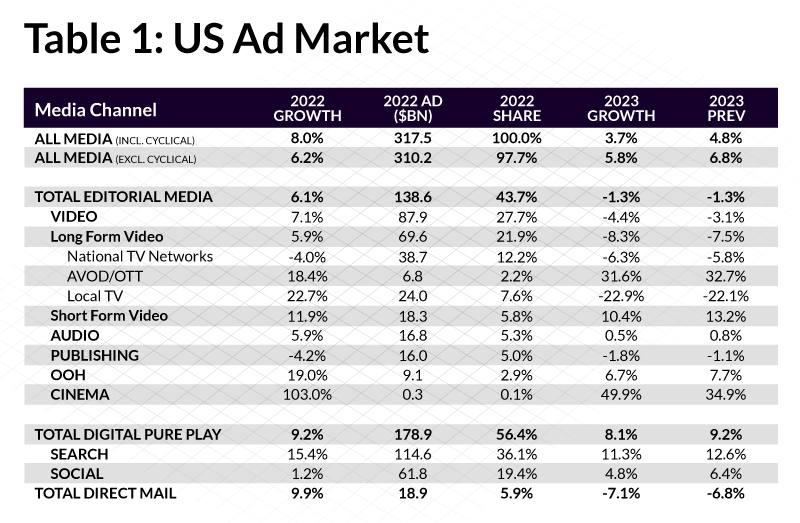
Report table source: Magna
Ad Spending Slowdown Still Growing
One of the biggest challenges SSPs are facing in 2024 is the decrease in the amount of money advertisers are willing to spend on advertising through its platform because advertising budgets are the first to be cut off in the market when push comes to shove.
When ad spending slows down, it can impact the revenue of the SSP and the publishers that use the platform to sell their ad inventory.
In its recently released ad spending forecast, Magna projects that globally, ad spending revenue for media owners totals $833 billion, a year-over-year increase of 5% from $795 billion. The revised forecast is 1.5% lower than Magna's June projection. They also cited a deteriorating macroeconomic outlook for lowering its projection. The 5% year-over-year increase in 2023 is lower than the +7% registered in 2022 and +23% from 2021.
Magna also further predicted that:
- Traditional media owners' ad sales will decline by -3% in the publishing industry and -4% in the television industry.
- Television advertising will suffer from continued erosion in linear viewing (-5% to -15% depending on targets and markets)
- Due to sluggish demand (GDP growth under 1%) and the need for cyclical ad expenditure, the US market growth rate will be below average in 2023 (+4% to $330 billion).
Following advertising spending projections depending on geography, LATAM is highlighted as its advertising expenditures are projected to exceed $25 billion (+14%) in 2022. However, according to the IMF, the regional economy, which was already slow in 2022 (GPD +3.5%), would decline further (+1.7%).
As a result, advertising revenue growth in LATAM will decelerate to +9%, which is unusually low for a region with high endemic inflation.
Thus, SSPs must find ways to adjust their revenue streams to compensate for the decreased demand. This can include diversifying their offerings, increasing efficiency in their operations, and looking for new revenue opportunities to guard themselves against this impending ad spending decrease.

Report table source: Magna
Ad Blockers
Ad blockers are another significant challenge facing SSPs, as they reduce the reach and impact of digital advertising campaigns. Ad blockers limit the visibility of online ads, making it more difficult for SSPs to monetize their inventory and provide value to their clients. Ad blockers have become increasingly popular among consumers, leading to a decline in viewability and revenue for SSPs.
Advertisers are becoming more concerned about where their ads are appearing and are beginning to move the activation of their programmatic advertising to the supply side of the ecosystem where the sustainable data is. So, SSPs must adopt new and innovative ad formats that provide a better user experience, such as native and programmatic video ads and work with publishers to improve the overall user experience of their websites while reducing the number of intrusive ads and improving load times.
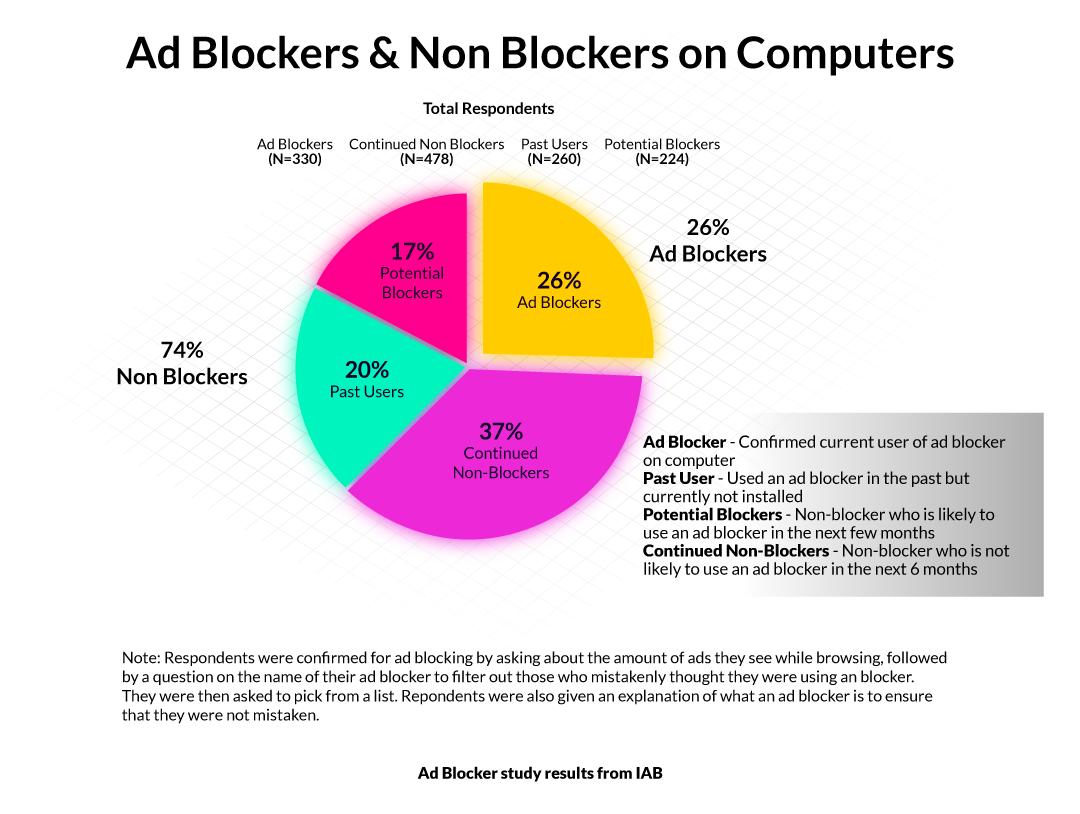
Disintermediation in Programmatic
As advertisers increasingly allocate their ad budgets to the sell-side, larger SSPs naturally seek to establish dominance in the programmatic advertising industry. Consequently, SSPs find themselves competing not only with other programmatic players but also grappling with disintermediation within their own market.
According to Rob Webster, chief strategy officer at Canton Marketing Solutions, various entities such as DSPs, SSPs, publisher consortiums, and emerging networks vie for control over the premium publisher space, particularly in areas like CTV. This underscores a shift in the ad tech industry towards strategies that make practical sense in the current landscape.
For instance, Integral Ad Science (IAS), initially known for ad verification services, recently introduced Total Visibility, a tool borne out of recommendations previously made by SSPs to marketers. Total Visibility aids marketers in identifying optimal pathways to premium publishers and determining fair inventory prices.
Lisa Utzschneider, CEO of Integral Ad Science(IAS), highlights the growing demand from brands and agencies for enhanced visibility into programmatic buys. Leveraging IAS's QPO solution and metrics like qCPM allows advertisers to identify effective channels for acquiring high-quality inventory at efficient costs.
In light of these developments, it becomes apparent that IAS competes, albeit indirectly, with SSPs. As SSPs expand beyond their traditional publisher-centric roles, they aim to attract marketers who typically engage DSPs to enhance their publisher-focused endeavors. Feeling the pressure of losing their exclusive ties to publishers, SSP executives strive to position themselves as preferred inventory pipelines for marketers.
This trend has not gone unnoticed by DSPs, prompting initiatives like TradeDesk's OpenPath, a direct-to-publisher solution. OpenPath enables DSPs to access publishers directly, potentially undermining SSPs' intermediary roles. Whether this represents a form of retaliation remains speculative.
Frequently asked questions
What are the top trends for SSPs in 2024?
Top trends include combating ad fraud, addressing bidstream inefficiency, adapting to DSP bid request limitations, and managing ad spending slowdowns.
How do SSPs and DSPs address bidstream inefficiency?
SSPs and DSPs address inefficiency by implementing QPS restrictions, refining bid request processes, and optimizing ad spend allocation.
What impact do ad blockers have on SSPs?
Ad blockers reduce SSPs' ad reach and revenue by limiting online ad visibility, necessitating innovative ad formats and improved user experiences.

Shaping a Greener Future: Assertive Yield Releases an In-Depth Look at Green Advertising and Scope 3 Emissions
Read more

4 Ways SSPs Can Overcome Ad Spending Slowdown
Read more

What is QPS Optimization?
Read more



